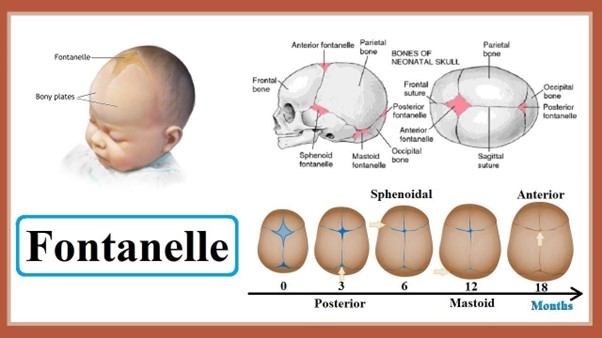A nurse is caring for a client who has acute glomerulonephritis.
Which of the following findings should the nurse expect?
Hematuria
Polyuria
Weight loss.
Hypotension
The Correct Answer is A
The correct answer is choice A, hematuria.
Hematuria is the presence of red blood cells in the urine, which can make it appear pink or cola-colored. Hematuria is a common sign of glomerulonephritis, which is inflammation of the tiny filters in the kidneys (glomeruli) that remove waste and excess fluid from the blood.
Hematuria occurs because the inflamed glomeruli allow some blood cells to leak into the urine.
Choice B, polyuria, is wrong because polyuria is the production of abnormally large amounts of urine. Polyuria is not a typical feature of acute glomerulonephritis, which may actually cause reduced urine output due to fluid retention and decreased kidney function.
Choice C, weight loss, is wrong because weight loss is not a common symptom of acute glomerulonephritis. On the contrary, weight gain may occur due to fluid retention and edema (swelling) in the face, hands, feet and abdomen.
Choice D, hypotension, is wrong because hypotension is low blood pressure. Hypotension is not usually associated with acute glomerulonephritis, which may cause high blood pressure (hypertension) due to fluid overload and impaired sodium excretion by the kidneys.
Normal ranges for blood pressure are less than 120/80 mmHg for adults.
Normal ranges for urine output are about 800 to 2000 mL per day for adults.
Normal ranges for protein in the urine are less than 150 mg per day for adults. Normal ranges for red blood cells in the urine are less than 3 per high-power field for men and less than 5 per high-power field for women.
Nursing Test Bank
Naxlex Comprehensive Predictor Exams
Related Questions
Correct Answer is D
Explanation
The correct answer is choice D, a noncoring needle.
A noncoring needle is a special type of needle that has a beveled tip and a side hole. It is designed to prevent damage to the port’s septum, which is the soft silicone top that serves as the vein access point.
A noncoring needle also reduces the risk of infection and clotting.
Choice A is wrong because a butterfly needle is a small, winged needle that is used for peripheral venous access, not for accessing a port. A butterfly needle can damage the port’s septum and cause leakage or infection.
Choice B is wrong because an angiocatheter is a thin, plastic tube that is inserted into a vein using a needle.
It is used for short-term IV therapy, not for accessing a port. An angiocatheter can also damage the port’s septum and cause complications.
Choice C is wrong because a 25-gauge needle is too small to access a port.
A 25-gauge needle is typically used for subcutaneous injections, not for intravenous injections. A 25-gauge needle can also clog the port or cause hemolysis (breakdown of red blood cells).
Normal ranges for ports vary depending on the type and size of the port, but generally they have a reservoir diameter of 1.5 to 2.5 cm, a catheter length of 40 to 60 cm, and a catheter diameter of 0.8 to 1.2 mm. Ports are usually flushed with saline or heparin solution every 4 to 6 weeks when not in use to prevent clotting.
Correct Answer is A
Explanation
Choice A reason
The anterior fontanel is open is the correct answer. An expected finding in an 8-month-old infant is that the anterior fontanel (the soft spot on the top of the baby's head) is open. The fontanelles are spaces between the bones of an infant's skull that allow for the baby's brain to grow and the skull to mould during birth.
The anterior fontanel typically remains open until the baby is around 18 to 24 months old, with the closure process starting sometime after 9 months of age. Therefore, at 8 months of age, it is normal for the anterior fontanel to still be open.
Choice B reason:
Both fontanels are the same size is incorrect. Both fontanels are usually not the same size. The anterior fontanel is larger and diamond-shaped, while the posterior fontanel is smaller and triangular.
Choice C reason:
The posterior fontanel is open is incorrect. The posterior fontanel, located at the back of the baby's head, usually closes earlier than the anterior fontanel. It typically closes within the first few months after birth, so it is not expected to be open at 8 months of age.
Choice D reason
Both fontanels show molding is incorrect. Molding refers to the temporary shaping of the baby's head during birth due to the pressure exerted during the passage through the birth canal. By 8 months of age, the molding typically resolves, and the baby's head should have a more rounded appearance.

Whether you are a student looking to ace your exams or a practicing nurse seeking to enhance your expertise , our nursing education contents will empower you with the confidence and competence to make a difference in the lives of patients and become a respected leader in the healthcare field.
Visit Naxlex, invest in your future and unlock endless possibilities with our unparalleled nursing education contents today
Report Wrong Answer on the Current Question
Do you disagree with the answer? If yes, what is your expected answer? Explain.
Kindly be descriptive with the issue you are facing.
